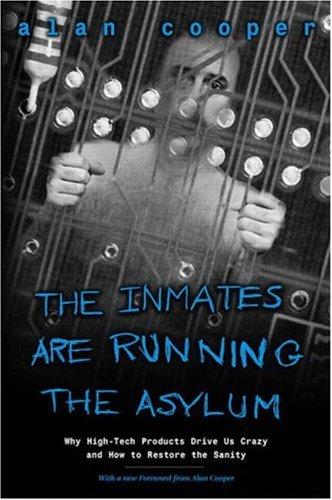255 pages
English language
Published Sept. 13, 2004 by Sams.

255 pages
English language
Published Sept. 13, 2004 by Sams.
Imagine, at a terrifyingly aggressive rate, everything you regularly use is being equipped with computer technology. Think about your phone, cameras, cars - everything - being automated and programmed by people who in their rush to accept the many benefits of the silicon chip, have abdicated their responsibility to make these products easy to use. The Inmates are Running the Asylum argues that, despite appearances, business executives are simply not the ones in control of the high-tech industry. They have inadvertently put programmers and engineers in charge, leading to products and processes that waste money, squander customer loyalty, and erode competitive advantage. Business executives have let the inmates run the asylum! In his book The Inmates Are Running the Asylum Alan Cooper calls for revolution - we need technology to work in the same way average people think - we need to restore the sanity. He offers a provocative, insightful …
Imagine, at a terrifyingly aggressive rate, everything you regularly use is being equipped with computer technology. Think about your phone, cameras, cars - everything - being automated and programmed by people who in their rush to accept the many benefits of the silicon chip, have abdicated their responsibility to make these products easy to use. The Inmates are Running the Asylum argues that, despite appearances, business executives are simply not the ones in control of the high-tech industry. They have inadvertently put programmers and engineers in charge, leading to products and processes that waste money, squander customer loyalty, and erode competitive advantage. Business executives have let the inmates run the asylum! In his book The Inmates Are Running the Asylum Alan Cooper calls for revolution - we need technology to work in the same way average people think - we need to restore the sanity. He offers a provocative, insightful and entertaining explanation of how talented people continuously design bad software-based products. More importantly, he uses his own work with companies big and small to show how to harness those talents to create products that will both thrill their users and grow the bottom line.